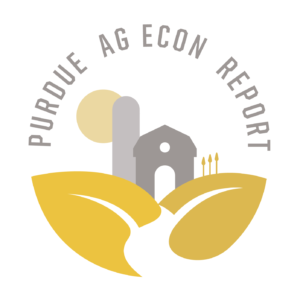Tax Planning in Difficult Times
December 12, 1998
PAER-1998-21
George F. Patrick, Professor
Low commodity prices do NOT necessarily imply low taxable incomes for Corn Belt farmers in 1998. For farmers using the cash accounting method, it is when an input is paid for, rather than when the input is used, that determines when that cost is deductible for tax purposes. Receipts are reported as income the year in which they are received. Simply assuming that 1998 will be a low taxable income year may lead to poor tax planning. Check your tax situation while there is still time to make potentially money-saving adjustments.
High Incomes in 1998
Many farmers sold their 1997 crop production after January 1, 1998. Some farmers may have sold commodities in 1997, but deferred payment into 1998. In both cases, these sales would be counted as income in 1998. Many farmers will also take the loan deficiency payments (LDP) on their 1998 corn and soybean pro-duction near the end of harvest and, the LDPs will be 1998 income. If farmers exercise their option to take 50% of their 1999 production flexibility payments (PFP) in 1998, these payments will be 1998 income, together with the 1998 production flexibility payments received early in 1998. To top-off what may be an already high income year for some, the 1998 Market Loss Assistance Payment (MLAP), which is about half of the 1998 PFP, was paid in November 1998.
Many farmers are familiar with techniques to reduce tax-able income in a high income year. First of all, the advance 1999 PFP payment may be delayed and received totally in 1999.
Considering the surprise MLDA payment which came automatically in 1998, this may be appropriate tax planning. Delaying sales, using deferred payment contracts, prepaying expenses, purchasing machinery and equipment, and using Section 179 expensing election are some of the common techniques. In a low-income year, many of these techniques can be reversed to improve a farmer’s tax situation.
Low Income for 1998
For a married couple, there is no federal income tax on the first $12,500 of 1998 income. This increases to $17,900 for a family of four and, depending on their situation, the family may qualify for the new child tax credit and earned income tax credit. Thus, if the year-to-date review indicates that net income will be less than this “tax-free” amount, attempts should be made to increase income for tax purposes. Delaying purchases or payment for items already purchased until after January 1, 1999 will reduce expenses for 1998. For assets acquired in 1998, slow methods of depreciation may be elected; however, no changes are possible for assets already on the depreciation schedule. Selling some commodities, culling livestock, and taking the advance 1999 PFP before the end of the year would increase 1998 receipts. Farmers who take Commodity Credit Corporation (CCC) loans on their production in 1998 may elect to report the loans as income this year. However, once this election is made, all future CCC loans must be reported as income when received rather than being treated as loans.
Some farmers may have substantial losses on their Schedule Fs, farm income and expenses, for 1998. Negative Schedule F income may be off-set by income from other sources such as the sale of cull breeding stock, machinery, and equipment reported on Form 4797 or off-farm employment. However, even with other sources of income included, a farmer’s adjusted gross income for taxes can be negative because of the Schedule F loss. In this situation, a net operating loss (NOL) may exist. A 1998 farm NOL may carried back either five years and applied against income in 1993 or two years and applied against 1996 income (a three year carryback applies to Presidentially declared disaster areas). Alter-natively, a farmer may elect to forgo the carryback and carry the NOL for-ward up to 20 years into the future. If the farmer wants to carry the NOL forward, the election must be included with the timely filed 1998 tax return.
The amount of tax savings, as well as the time value of money, needs to be considered in determining the best strategy for utilizing the NOL. Some planning opportunities are also possible with income and expense items related to the NOL. Assistance of a tax professional may be helpful in decisions whether to carry back or carry forward an NOL. Farmers with a negative or very low Schedule F income in 1998 may want to use the optional farm method to report their earnings for self-employment taxes to obtain or maintain their disability coverage and other Social Security benefits.
